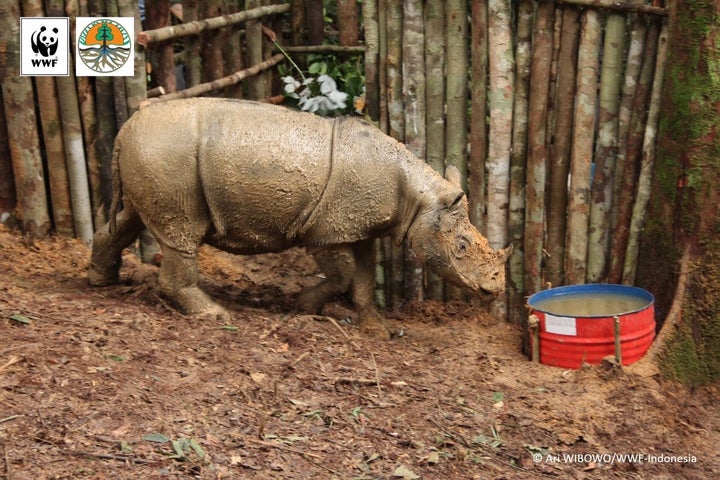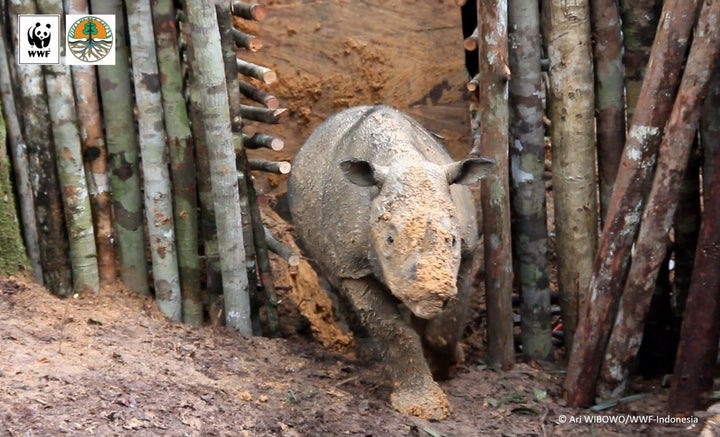In the uphill battle to save the critically endangered Sumatran rhino, good news is hard to come by. Last year, the species was declared extinct in the wild in Malaysia and conservationists warned that the creatures -- which number less than 100 -- may disappear entirely from the planet before too long.
“With the ongoing poaching crisis, escalating population decline and destruction of suitable habitat, extinction of the Sumatran rhino in the near future is becoming increasingly likely,” Simon Stuart of International Union for the Conservation of Nature told The Guardian in September.
But this week, a rare ray of hope has illuminated the rhino’s struggle for survival, bringing some much-needed optimism to the crisis.
For the first time in 40 years, conservationists have made physical contact with a Sumatran rhino in Kalimantan, the Indonesian part of the island of Borneo:
According to the WWF, which captured the animal on March 12 for protective purposes, it had been assumed that the Sumatran rhino had gone extinct in Kalimantan until researchers found evidence to the contrary in 2013.
Footprints of the animal and photos captured by camera traps proved the rhino's existence, but none had been seen face-to-face in Kalimantan in four decades.
“This is an exciting discovery and a major conservation success,” Pak Efransjah, CEO of WWF-Indonesia, said in a statement. “We now have proof that a species once thought extinct in Kalimantan still roams the forests, and we will now strengthen our efforts to protect this extraordinary species.”
WWF told The Guardian that the female rhino, believed to be around 4 or 5 years old, will soon be re-homed in a sanctuary about 100 miles from where she was captured. The location of the sanctuary has been kept “really, really vague” to deter poachers, said Stuart.

Sumatran rhinos were once widespread across Asia, from northern India and China to Myanmar, Thailand and the Malay Peninsula. Habitat destruction and poaching, however, decimated populations and by 1965, the species was considered “very rare.”
The IUCN has classified the Sumatran rhino as critically endangered since 1996.
Today, the rhino can only be found in the wild in Indonesia -- in both Kalimantan and the island of Sumatra.

In an attempt to save the Sumatran rhino from complete annihilation, conservationists have been encouraging breeding among the few animals that remain.
Last year, Harapan, the only male Sumatran rhino in the western hemisphere, was transported across almost 10,000 miles from the Cincinnati Zoo to mate with females in a sanctuary in Sumatra.
“We are hoping [a particular rhino named Rosa] and Harapan will hit it off,” Terri Roth, Cincinnati Zoo’s vice president for conservation and science, told National Geographic.

The Sumatran rhino is the smallest living rhinosaurus. Covered with long hair, the species -- also known as “hairy rhinos” -- are “more closely related to the extinct woolly rhinos than any of the other rhino species alive today,” WWF says.
“It’s a fantastic animal. It’s the weirdest of all the rhinos. They meow like a cat,” Stuart told The Guardian last year of the rare creature. “No one is going to get rich on Sumatran rhinos other than those illegally trading in the horn. There are frankly no economic benefits to saving it, it’s just a moral obligation.”
